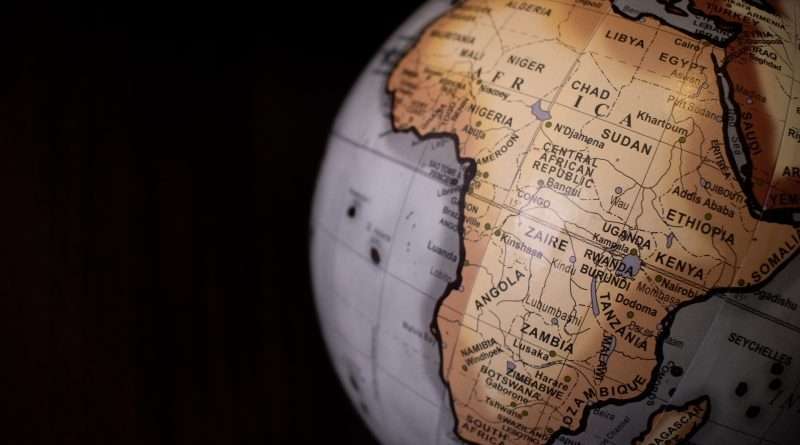Why is Africa So Rich Yet So Poor?
Africa is a treasure trove with rich resources like gold, diamonds, copper, and platinum. But its vast material wealth is juxtaposed sharply with a challenging reality: while it boasts human talent, many residents remain unemployed.
Theoretically, the equation should be simple: combine these natural resources with human potential, and prosperity should follow. However, as is often the case, the solution could be more complex.
Mining Investments and Government Role
For mining endeavours to succeed, two conditions must be met:
- Willing Investors: Many mining companies are keen to invest and willing to shoulder the financial risks.
- Supportive Government: The government should create an atmosphere conducive to investment and genuinely care about its unemployed masses.
This once straightforward process now faces a bottleneck, and it often resides with the latter condition. Governments can sometimes impose daunting requirements on investors:
- Fluctuating laws that threaten the stability of the mine.
- Mandatory sharing of 50% equity with locals who don’t necessarily add value.
- Compulsory involvement of national mining unions.
- Expectations of self-sufficient electricity and transportation systems due to local infrastructural shortcomings.
- Strict stipulations on equipment sourcing.
- And, unfortunately, the spectre of corruption lingers with unofficial’ fees’.

Historical Context and Modern Struggles
To understand Africa’s present, we must delve into its past. Often considered the cradle of humanity, Africa saw its inhabitants migrate and adapt to various global regions. Over time, as these migrants advanced technologically and accumulated resources, they returned to Africa. However, this return was only sometimes harmonious.
In many instances, indigenous Africans were subjugated, their resources extracted, and their land acquired in exchange for goods they had never seen before. This imbalance perpetuated a cycle where only a few benefitted—usually politicians and specific business-savvy individuals.
The Dichotomy of Development
Today’s Africa presents a contrasting picture. Urban centres like Johannesburg bristle with modernity, while rural areas like Lesotho remain seemingly untouched by time. This divide, however, isn’t necessarily about wealth versus poverty.
Rural residents, deeply connected to their land, cultivate their food, rear animals, and lead self-sufficient lives. The simplicity of their existence might appear ‘underdeveloped’ to the urban eye, but it often equates to happiness. Yet, exposure to modern technologies, like laptops and smartphones, can foster feelings of inadequacy among them.

The Way Forward
Recognizing the differences in development and the choices people make is crucial. While urban living might seem desirable, there’s undeniable merit in rural life, which offers peace, simplicity, and connection to nature.
To bridge the disparity between Africa’s immense wealth and its challenges, there’s a need for:
- Transparent and supportive governance.
- Respect for all ways of life, whether urban or rural.
- An understanding of Africa’s nuanced history and its bearing on the present.
It’s essential to acknowledge that wealth isn’t just monetary—it’s in resources, culture, and people’s choices. In all its complexities, Africa remains a continent rich in every sense of the word.
Embracing Diversity and Unity
Africa’s Tapestry of Cultures
Africa isn’t just a land of resources; it’s a vibrant mosaic of cultures, languages, and traditions. Each nation each tribe has its stories, its dance, its music. This rich tapestry is as much a treasure as the gold and diamonds beneath the soil.
The Impact of Colonial Legacy
The lingering shadows of colonialism have significantly influenced Africa’s socio-economic landscape. Land ownership, economic power structures, and perceptions of value and modernity can trace their roots back to the colonial era. While it’s easy to blame historical powers for present-day challenges, it’s more constructive to understand these legacies and work towards rectifying imbalances.
Education and Empowerment
One of the critical pillars to bridging the divide is education. Not just teaching in the traditional sense but also understanding financial systems, entrepreneurship, and the global economy. Empowering Africans with knowledge will ensure they can harness the continent’s rich resources for the benefit of its people.
Moreover, educating the global community about Africa – its past struggles, present challenges, and potential future – can pave the way for more equitable international partnerships.
Infrastructure and Sustainable Development
Building robust infrastructure is paramount. This means more than skyscrapers, highways, sustainable agricultural practices, renewable energy sources, and digital connectivity. By embracing sustainable development, Africa can leapfrog some environmental challenges other developed nations currently grapple with.
Towards a Brighter Future
The question remains: how does Africa move from potential wealth to actual prosperity? The answer may lie in a combination of internal reform and external partnership. African nations must address governance issues, combat corruption, and invest in their people. At the same time, international partners should approach Africa with respect, understanding its complexities and seeking genuine collaborative ventures.
What did we learn today?
Africa’s story isn’t one of simple dichotomies. It’s not just about rich land and poor people. It’s a story of resilience, diversity, and immense potential. By recognizing its multifaceted nature and working collectively, internally and with global allies, Africa can shine, ensuring its wealth benefits all its people.

